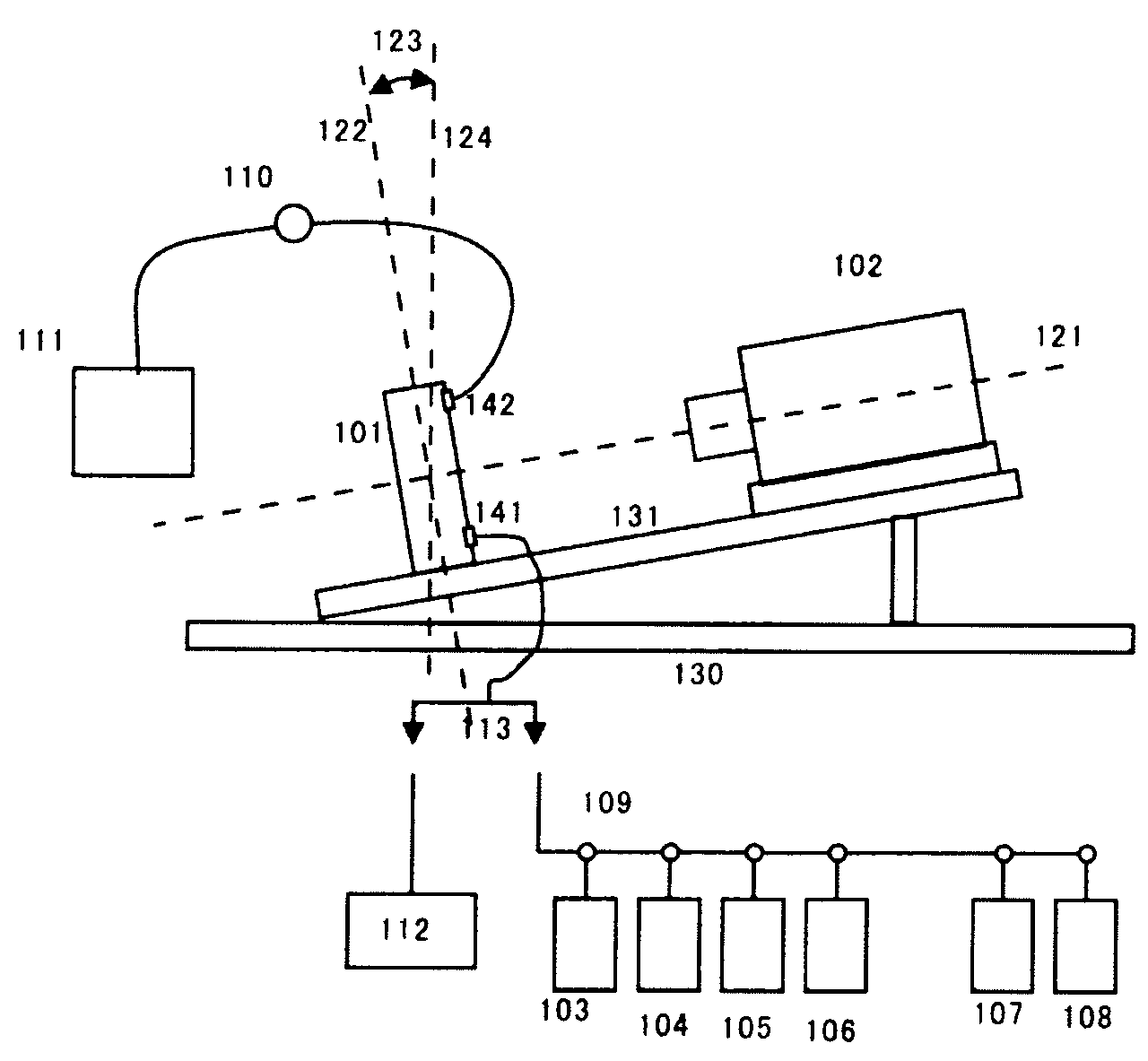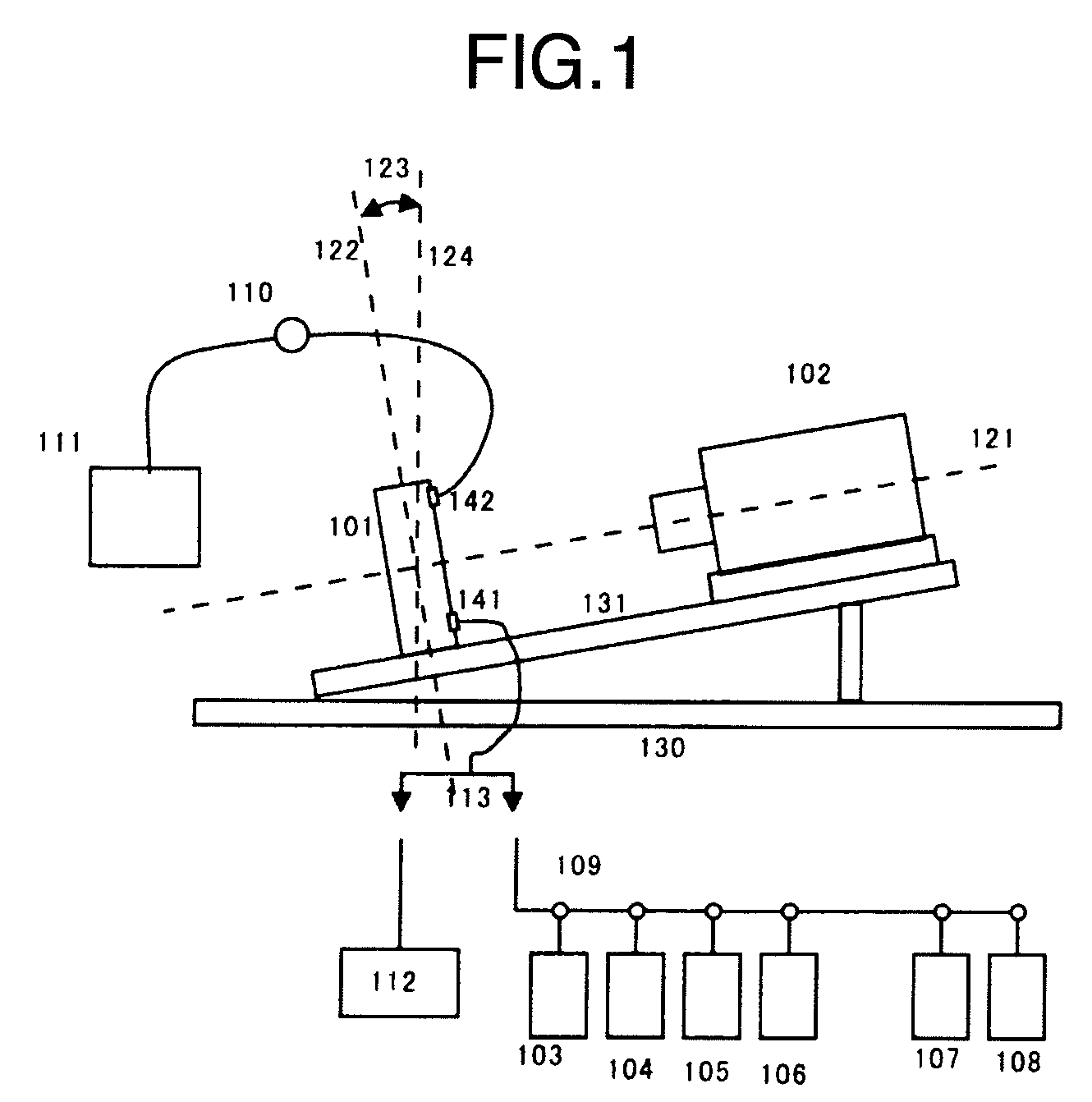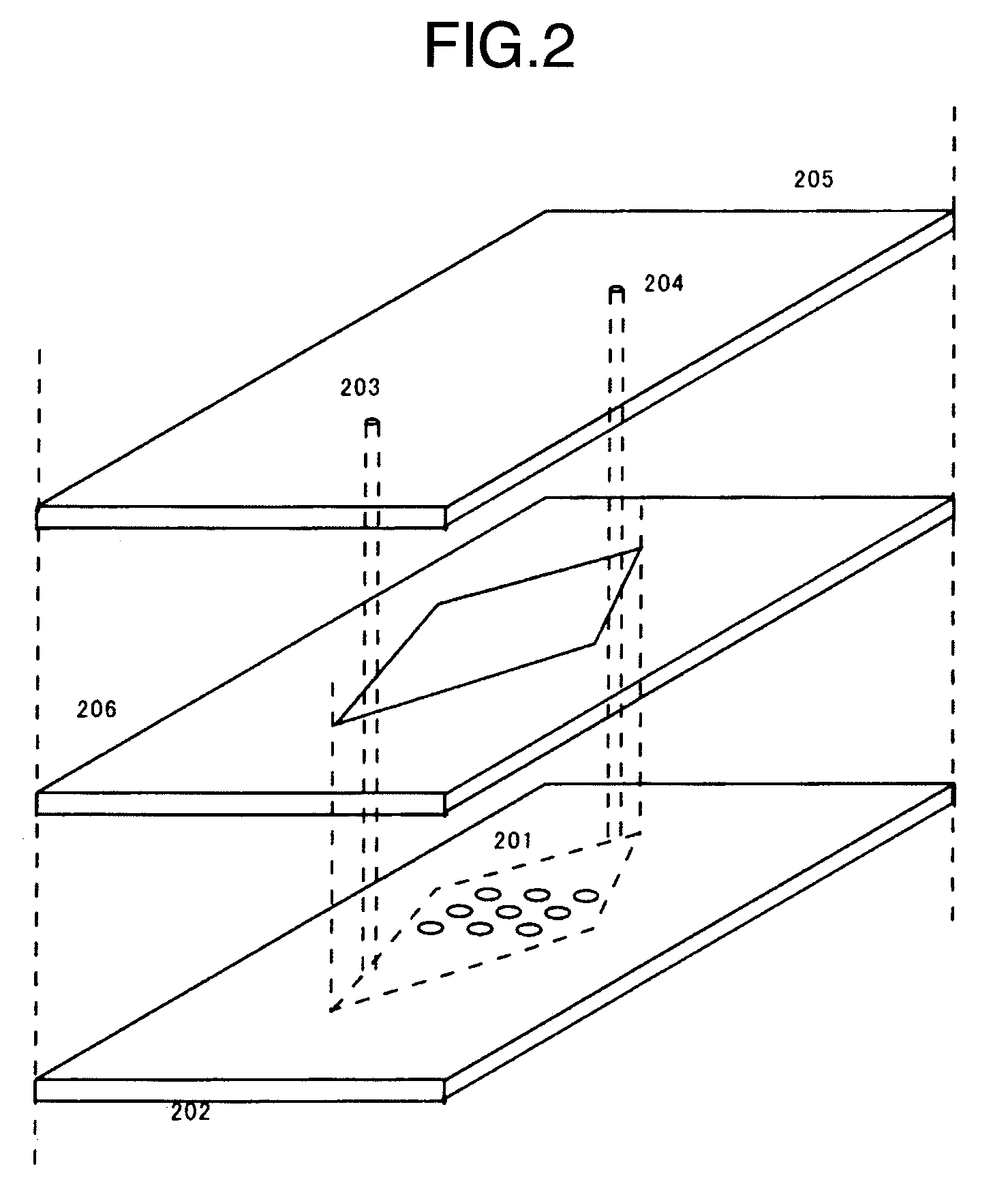System for analysis of gene sequence
a gene sequence and system technology, applied in the field of system for gene sequence analysis, can solve the problems of short base length analyzable by the technique, excessive elongation of residual components, and difficult discrimination between false elongation and real elongation, so as to reduce residual reagents, improve the accuracy of reagent introduction, and increase the analysis throughput
- Summary
- Abstract
- Description
- Claims
- Application Information
AI Technical Summary
Benefits of technology
Problems solved by technology
Method used
Image
Examples
Embodiment Construction
[0032]Solving the problems described above requires a technique for “automatically” inserting sample fixing beads into microfabricated reactors and a technique for preventing beads from being easily discharged during introduction of a reagent. We conceived use of beads having a high specific gravity as measures against the problems. Most of beads which have been used in biological fields have a specific gravity less than 4. Particularly, for the sepharose bead in the prior art described above, the specific gravity is only slightly greater than 1, which is almost same as that of a surrounding solution, and therefore beads are easily discharged against the intention to fix them on predetermined regions. Accordingly, it is required to pack the beads with microparticles and the like, thus causing the problem of incomplete reagent introduction and incompleteness during replacement of the reagent. As described in examples, a bead having a specific gravity of 4 or greater is easily capture...
PUM
| Property | Measurement | Unit |
|---|---|---|
| Angle | aaaaa | aaaaa |
| Flow rate | aaaaa | aaaaa |
| Diameter | aaaaa | aaaaa |
Abstract
Description
Claims
Application Information
 Login to View More
Login to View More - R&D
- Intellectual Property
- Life Sciences
- Materials
- Tech Scout
- Unparalleled Data Quality
- Higher Quality Content
- 60% Fewer Hallucinations
Browse by: Latest US Patents, China's latest patents, Technical Efficacy Thesaurus, Application Domain, Technology Topic, Popular Technical Reports.
© 2025 PatSnap. All rights reserved.Legal|Privacy policy|Modern Slavery Act Transparency Statement|Sitemap|About US| Contact US: help@patsnap.com



